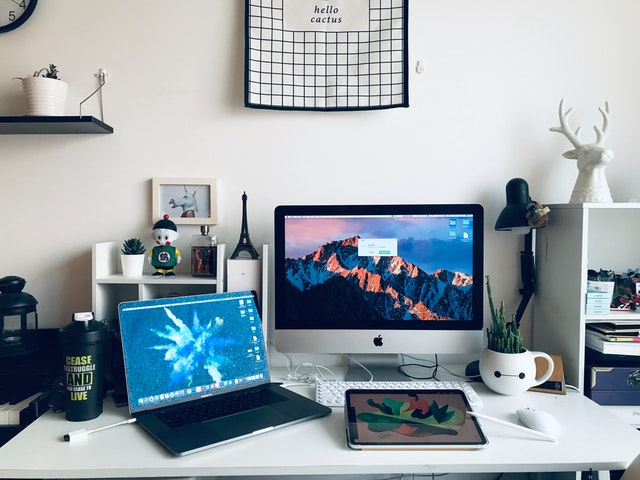The Getting Things Done (GTD) method is a popular task management system created by David Allen – a productivity consultant. It’s based on the fact that the more information you have swimming around in your head, the more difficult it is to decide what to prioritize. As a result, you spend more time thinking about the tasks you need to do than actually getting them done. When too much information piles up in your head, it can cause you to feel uncertain, overwhelmed and stressed.
Our brains are much better at processing information than storing it, and the Getting Things Done method shows you how to declutter your brain by moving everything to an external system, and then organizing that system so you can focus on the right tasks at the right times.
The Getting Things Done method works well for both work and home life, and you should give it a try if you:
- Get overwhelmed by the amount of things you need to keep track of
- Worry about forgetting the smaller details or tasks
- Wear a lot of hats in your work and/or home life
- Find yourself starting lots of projects but rarely finish them
The 5 Steps to the Getting Things Done Method
The GTD method only has 5 steps:
- Capture
- Clarify
- Organize
- Reflect
- Engage
Capture
Have you ever had a great thought or idea but didn’t write it down, only to find you’ve forgotten it later? This is because our brains are good at coming up with ideas, but not so good at storing them.
The capture stage of the GTD method involves capturing whatever has your attention – no matter how big or small – and store it in your ‘inbox’. You may find that you have multiple ‘inboxes’. For example: you may have a notepad or paper tray for hand-written notes, you may use an app like Notepad or Evernote or you may use a productivity app like Todoist or Trello.
It doesn’t matter what you use, or how many ‘inboxes’ you have, as long as you get those thoughts and ideas out of your brain and record them somewhere.
Clarify
Now you have all those thoughts, ideas and tasks in your ‘inbox’, it’s time to process what everything means.
Look at each item and decide if it’s actionable – if it is, decide the next steps. If it’s not actionable, decide whether it’s something for reference, something to put on hold or just plain trash.
Organize
Put everything in its place. Throw the trash away, label and file reference material, add dates to your calendar, sort your tasks in order of importance – delegate if you can – and create a to-do list.
Review
Review, update and revise your lists often. Find a timeline that works best for your situation. Whether it’s once a week on a Monday morning or Friday evening or every day.
Engage
Now everything is out of your head and organized, it’s time to get things done, starting with the most important stuff first.
This may seem a little intimidating at first, but once you begin using the GTD method, you’ll find it’s quite easy.
It’s not as Overwhelming as it Seems
Your brain is constantly being bombarded with information such as things you need to do, errands you need to run, phone numbers, names and more. When a new piece of information – any information – comes to you, you should think about what the information is and if it’s actionable.
If it’s not actionable – put it in one of these three places – trash, reference or someday/maybe. If you really don’t need it then it’s trash. If it’s something you think may be important, put it in the someday/maybe pile (remember to review it regularly) and if it’s a reference item, file it away where you can get to it whenever you need it.
If it is actionable – Ask yourself what’s the next step. If you cannot complete the task in one step, then it’s actually a project, not an action. A project is anything that requires multiple steps to complete. You may find you have multiple projects going at once, so it’s important to plan and review each one regularly.
Follow the 2-Minute Rule
For any actions you can complete in one step, ask yourself if you can complete it in 2 minutes or less. If you can complete it in that timeframe, just go ahead and get it done. If you don’t complete it right away, you may find that you keep putting it off because it’s such a small task and it never gets done.
If you can’t get it done in 2 minutes or less you have 2 choices. Delegate or defer.
If you delegate it to someone else, make sure you put it on a follow up list so you can make sure the task is done correctly. If you defer it, you’re pushing it into the future -whether it be later in the day, week or month. This may be because you have other tasks that are more important, need to complete other related tasks first, or it’s just something that you don’t have to do right away. Make sure you add it to your ‘next actions’ list so that you don’t forget it.
To Sum it Up
The Getting Things Done method is just one of many productivity methods that many people find useful. We will talk about others in future posts. Whether it’s managing home life – tasks like running errands and bathing the dogs or managing a growing list of work-related tasks and topics. You may find the GTD method useful in helping you manage your time and reduce your stress levels.
If you decide to give it a try, drop us a comment and let us know how it works for you.

